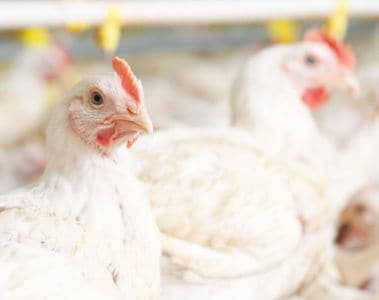
Avian Metapneumovirus
15 Apr 2024
The layer industry plays a crucial role in the global food supply, producing billions of eggs annually. In 2022, the U.S. alone produced 92.6 billion eggs, marking a slight decline from previous years due to challenges such as disease outbreaks. By the end of that year, the U.S. maintained a population of 308 million commercial laying hens, with each hen producing an average of 300 eggs per year. In 2022, more than half of the 261 million cases of eggs produced were sold as shell eggs through retail outlets, while the remainder was processed for food service, manufacturing, or export (Facts & Stats - United Egg Producers, 2017).
This data underscores the importance of maintaining the health and productivity of laying flocks to meet growing consumer demand. This article will explore the significant impact of viral diseases on egg production, focusing on key viruses such as HPAI, Infectious Bronchitis Virus (IBV), and Egg Drop Syndrome (EDS), and their implications for the layer industry.
Highly Pathogenic Avian Influenza (HPAI) has been one of the most devastating diseases affecting the poultry industry (APHIS, 2024). The virus spreads rapidly, causing severe respiratory illness and high mortality in affected flocks. Clinical signs include nasal discharge, coughing, sneezing, diarrhea, and a sharp drop in egg production. The 2023 outbreaks of HPAI led to a massive impact on commercial farms in the U.S., with over 21.57 million birds affected across various states (Hassan & Abdul-Careem, 2020; Highly Pathogenic Avian Influenza, 2024).
One of the challenges with HPAI is its ability to transform from low pathogenic avian influenza (LPAI) to highly pathogenic forms, exacerbating the situation. Infected flocks must be swiftly culled to prevent further spread, and strict biosecurity measures must be implemented. HPAI causes significant economic losses due to mass culling, decreased egg production, and reduced egg quality in surviving birds (Highly Pathogenic Avian Influenza, 2024).
Avian Metapneumovirus (AMPV), also known as turkey rhinotracheitis or swollen head syndrome, affects the upper respiratory tract of layers, leading to significant production losses (Lera, 2020). Infected chickens can show clinical signs such as nasal discharge, sneezing, and watery eyes, often accompanied by poor egg quality, including pale and thin-shelled eggs (Avian Metapneumovirus, 2024; Hassan & Abdul-Careem, 2020).
Currently, no commercial vaccines for avian metapneumovirus (AMPV) are available in the U.S. However, experimental vaccines have been developed, particularly targeting the emerging type B strain (Feedstuffs, 2024). While these vaccines show promise, they remain in the experimental phase and have not yet been made commercially available. As a result, U.S. poultry producers must rely on stringent biosecurity measures and management practices to control the spread of AMPV outbreaks.
Infectious Bronchitis Virus (IBV) is another respiratory disease that significantly impacts layers. In addition to targeting the respiratory system, IBV can also affect the reproductive organs, leading to the development of cystic oviducts and the condition known as false layer syndrome. This syndrome results in hens appearing healthy but failing to lay eggs due to permanent oviduct damage (Mueller Slay et al., 2022; Roberts & Souillard, 2011).
IBV spreads rapidly within a flock, often causing a significant drop in egg production. The severity of the impact can vary depending on the viral strain and the presence of co-infections (Roberts & Souillard, 2011). Eggs produced during infection may be misshapen, have thin or discolored shells, and exhibit poor internal quality (Mueller Slay et al., 2022). Vaccination is the primary preventive measure; however, the virus's continuous mutation makes it difficult to establish long-lasting immunity in flocks (Avian Coronavirus, 2023).
Egg Drop Syndrome (EDS) is caused by a duck adenovirus and can result in layers producing pale, thin-shelled, or shell-less eggs. The disease usually spreads horizontally through contaminated equipment or vertically through infected eggs (Roberts & Souillard, 2011). Birds infected with EDS may remain healthy, but the drop in egg production can range from 10%–40% (Smyth, 2022).
The disease was first recognized in the 1970s, and since then, control measures have been implemented through biosecurity and vaccination (Roberts & Souillard, 2011). However, the sporadic nature of outbreaks, especially in commercial layer flocks, continues to pose a risk.
Viral diseases remain a significant challenge for the layer industry, affecting productivity and egg quality. Diseases such as HPAI, AMPV, IBV, and EDS cause considerable economic losses and pose a risk to the global egg supply. Vigilant biosecurity measures, proper vaccination strategies, and effective flock management practices are essential to controlling these viral diseases and ensuring the sustainability of the layer industry. Ongoing research and the development of vaccines, especially for evolving viruses, will be crucial in lessening the impact of these diseases on egg production.
APHIS. (2024). Confirmations of Highly Pathogenic Avian Influenza in Commercial and Backyard Flocks | Animal and Plant Health Inspection Service. https://www.aphis.usda.gov/livestock-poultry-disease/avian/avian-influenza/hpai-detections/commercial-backyard-flocks
Avian Coronavirus: Infectious Bronchitis Virus. (2023). @anh. https://www.dsm.com/anh/en_NA/news/articles/avian-coronavirus-infectious-bronchitis-virus.html
Avian Metapneumovirus. (2024). https://www.dsm.com/anh/en_NA/news/articles/avian-metapneumovirus.html
Facts & Stats—United Egg Producers. (2017, outubro 19). https://unitedegg.com/facts-stats/, https://unitedegg.com/facts-stats/
Feedstuffs. (2024). Merck announces experimental avian metapneumovirus type B vaccine. Feedstuffs. https://www.feedstuffs.com/nutrition-and-health/merck-announces-experimental-avian-metapneumovirus-type-b-vaccine
Hassan, M. S. H., & Abdul-Careem, M. F. (2020). Avian Viruses that Impact Table Egg Production. Animals, 10(10), 1747. https://doi.org/10.3390/ani10101747
Highly Pathogenic Avian Influenza. (2024). https://www.dsm.com/anh/en_NA/news/articles/highly-pathogenic-avian-influenza.html
Highly Pathogenic Avian Influenza. (2024). @anh. https://www.dsm.com/anh/en_NA/news/articles/highly-pathogenic-avian-influenza.html
Lera, R. (2020). Avian Metapneumovirus in poultry—Laying Hens. https://layinghens.hendrix-genetics.com/en/articles/Avian_Metapneumovirus-swollen_head_syndrome-turkey_rhino_tracheitis-infectious_poultry_disease-disease-poultry-chickens-laying_hens-poultry_diseases-black_chicken-brown-chicken-white-chicken/
Mueller Slay, A., Franca, M., Jackwood, M., & Jordan, B. (2022). Infection with IBV DMV/1639 at a Young Age Leads to Increased Incidence of Cystic Oviduct Formation Associated with False Layer Syndrome. Viruses, 14(5), 852. https://doi.org/10.3390/v14050852
Roberts, J. R., & Souillard, R. (2011). Avian diseases which affect egg production and quality.
Smyth. (2022). Egg Drop Syndrome ’76—Poultry. Merck Veterinary Manual. https://www.merckvetmanual.com/poultry/egg-drop-syndrome-76/egg-drop-syndrome-’76
18 November 2024

15 Apr 2024

19 Feb 2024

17 Apr 2023
We detected that you are visitng this page from United States. Therefore we are redirecting you to the localized version.